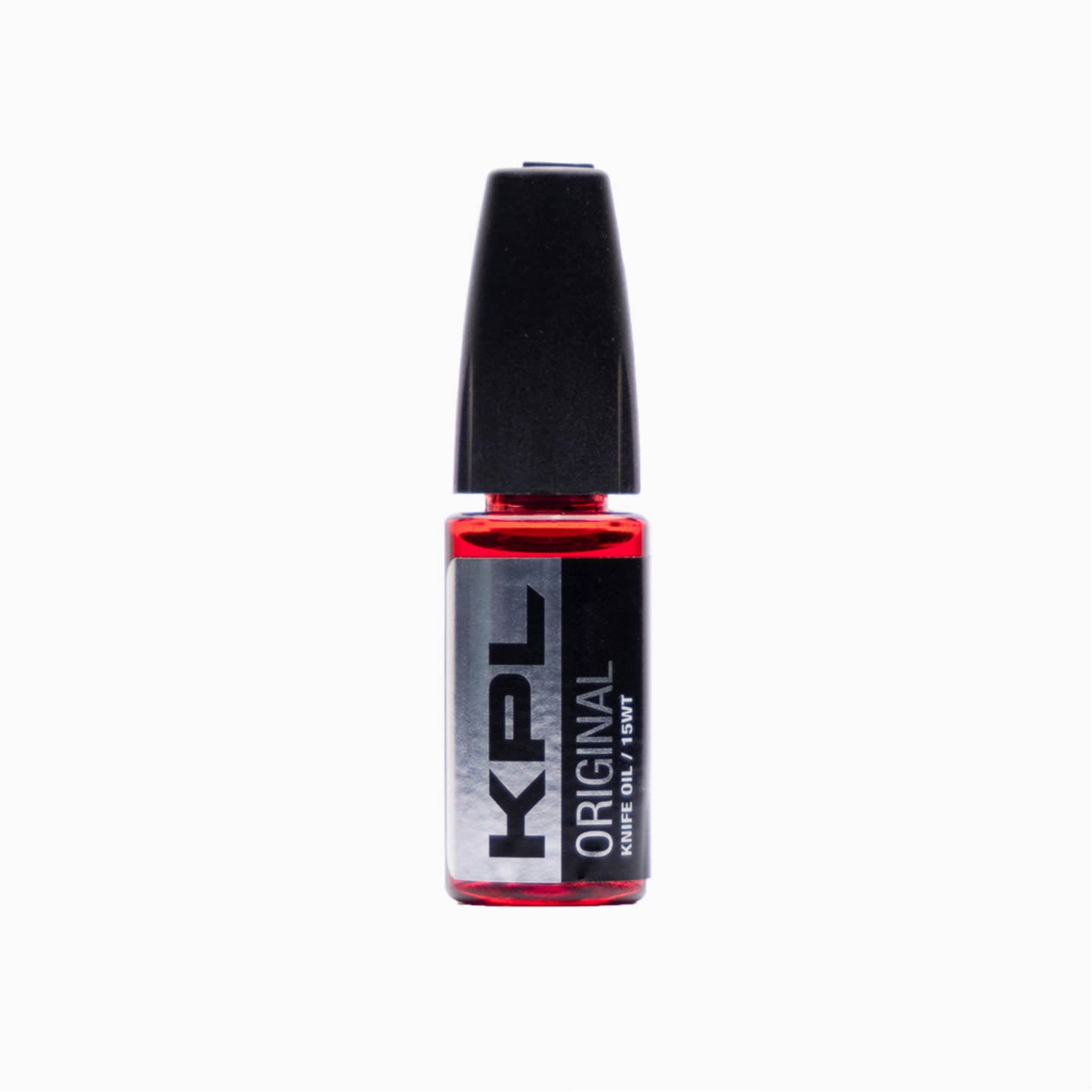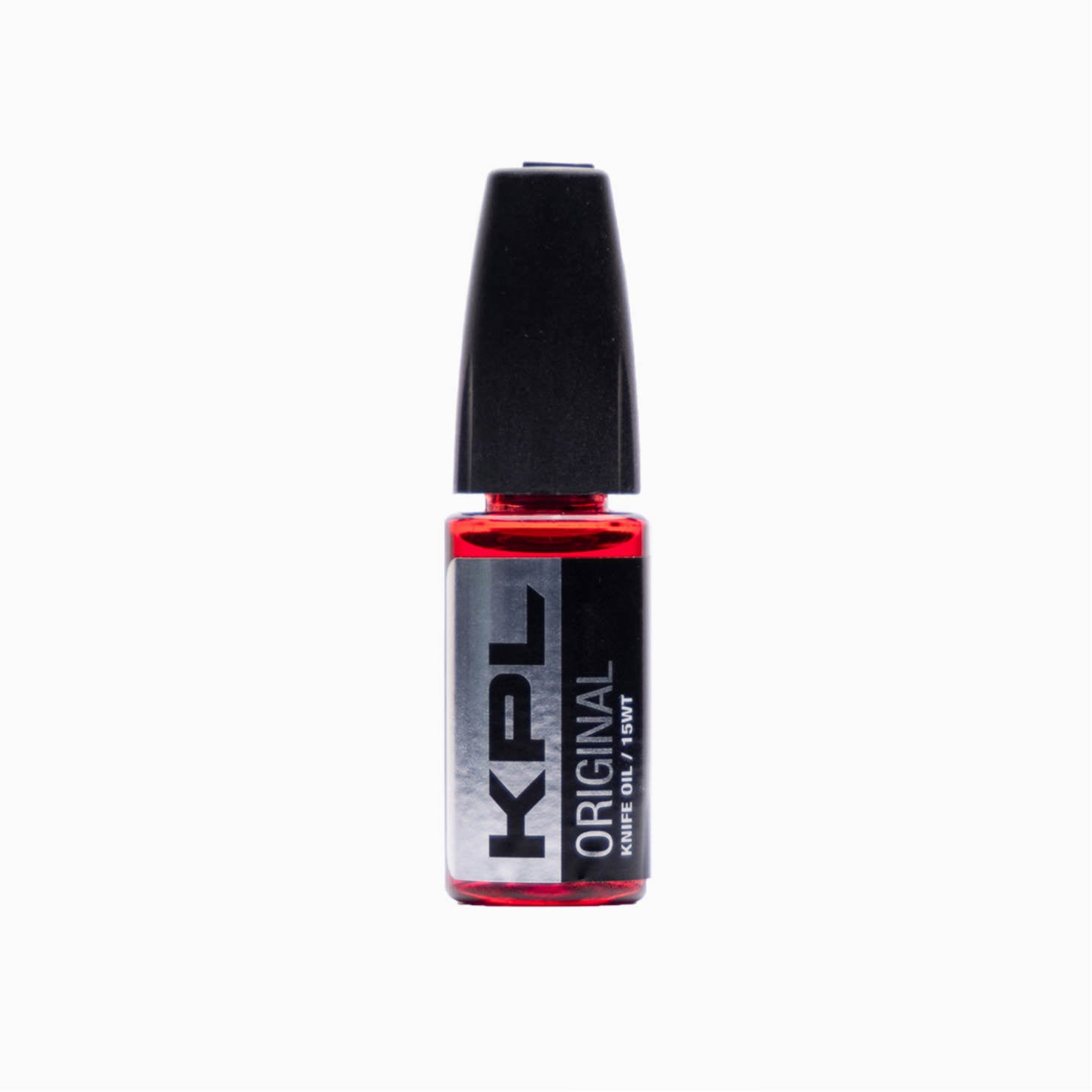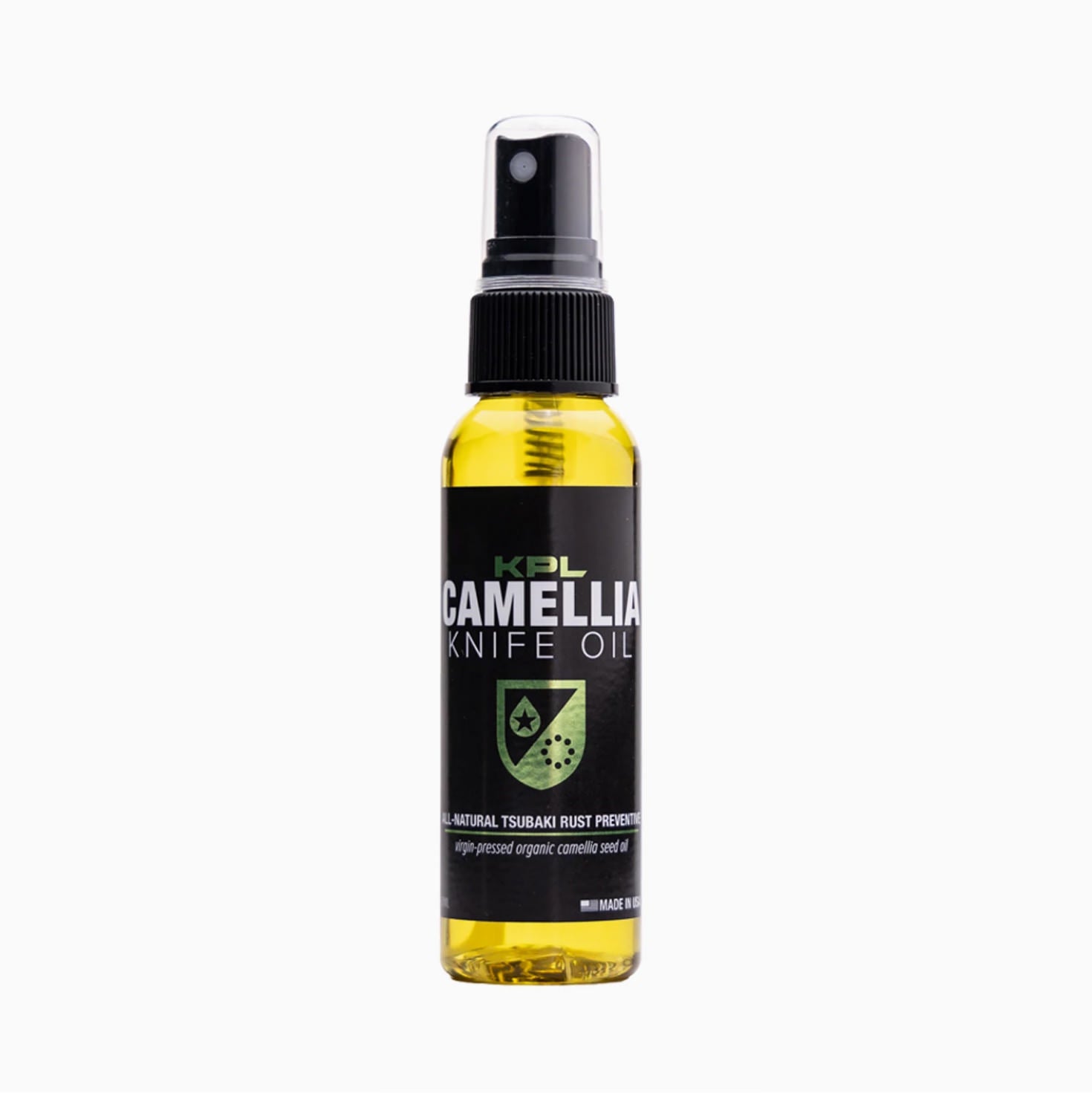There are literally an infinite number of ways to flip open a butterfly knife. Although this is the exact feature that makes them so popular and such great fidget knives, it can also be a daunting realization for someone trying to get into the hobby.
What’s the easiest balisong trick? Which tricks should I learn first? Where can I learn butterfly knife tricks? What are the most important balisong tricks? Who can help me!?
To answer all of these questions in order: it’s subjective, it depends, there are several places, the ones listed below, and don’t worry, we can! Here’s a list of the 8 most important balisong tricks to have in your repertoire - the most important to get started and build confidence, the most important to develop and maintain good technique, and the most important for a number of other reasons as well.
Once you've learned all the tricks on this list, check out our other trick lists including 20 Easy Tricks for Beginners, 15 Intermediate Tricks, 20 Expert Tricks, as well as some Uncommon Tricks to make your Flipping more Unique!
Drops
Ok so dropping your knife isn’t really a trick, but it's important to learn how to do properly because it is something that is going to happen a lot while you’re flipping. Just like when learning how to skateboard, it’s fundamental to know how to fall correctly in order to avoid serious or unnecessary injuries.
Before you start flipping make sure that you’re aware of your surroundings, and are not putting any people, pets, or breakable items in harm’s way should you accidentally drop your knife. Also keep in mind that flipping over a couch or bed will protect your knife from damage, but could very well send you shopping for new bedsheets or couch cushions!
Regarding how to actually drop your knife, there are a few things to keep in mind. First and most important is never try to catch a dropped knife. Although this may seem obvious on its face, it can be very tempting for flippers to mistakenly do this.
Second, don’t be afraid to drop your knife. If you mess up a combo, a trick doesn’t feel right, you’re not sure which handle you’re holding, your aerial is spinning unpredictably, so on and so forth, it’s best to just let the knife fall to the ground. Trying to save a failing or sloppy routine is an easy way to earn yourself a cut or two.
Finally, watch your feet! Of course the safest way to protect your feet is to wear shoes, but this is not always practical. The sooner you learn how to get your feet out of the way to dodge drops, the fewer foot stabs you’ll have to experience in your flipping journey.
One final word of advice on this: follow these suggestions even if you’re flipping a trainer. Although a trainer won’t slice or stab your hands or feet, they are notorious for reinforcing bad habits, and if you’re used to catching falling trainers then you may find yourself in some uncomfortable situations should you accidentally bring those habits with you to live blade flipping.
For more information on dropping your balisong and ways to mitigate damage to your knife, check out our previous article all about balisong drops.
Basic Openings/Closings

The next two tricks can be combined under the singular category of “basic openings” and are the “basic horizontal” and “basic vertical”. These tricks are important for a number of reasons, but perhaps the most significant is because they’re the de facto first tricks that people learn on a butterfly knife.
The basic horizontal is simply an outward double rollout followed by a final inward flip of the handle to open or close the knife. The basic vertical can be thought of as two ricochets followed by the opening or closing of the knife, with a rhythmic up-down-up motion.

Together these two basic tricks will teach you two of the fundamental balisong manipulations: rollouts and ricochets. You'll also get used to how butterfly knife handles swing and carry momentum, and these tricks will give you good practice in making sure you’re paying careful attention to which handle you’re holding while flipping.
For some, these two tricks are both the first and last stops on their balisong journey. They’re the sign of basic competency with a butterfly knife, and will allow you to easily open and close your butterfly knife with one hand.
For those who aren’t satisfied with just these two basic moves they offer a great way to start expanding your creativity by exploring how to create your own combos and develop a little style and flow. These two basic openings and closings can be extended with more rollouts and ricochets, and although any routine based off of these beginner tricks will be repetitive it’s certainly a great place to start!
Basic Icepick/Backhand Openings/Closings
The same basic openings that we just went over in the forehand position can also be executed in the backhand or “icepick” grip, and constitute the foundation of backhand tricks. These tricks are just as important as their forehand counterparts if you’re interested in getting into the hobby of flipping, or if you just want an easy and cool way to get into an icepick grip without having to fumble around with your knife.

Many people will find backhand balisong tricks to be inherently more difficult than those in a forehand grip, making it all the more important to learn these tricks as early as possible. Being confident manipulating your butterfly knife in the icepick grip will make learning other more difficult tricks much easier down the road.
Wrist Pass
The wrist pass is not a very impressive trick on its own, but it is one of the single most important moves to master for any balisong flipper. The earlier you learn this trick the better, and it will not only help reduce injury but will greatly help make your flipping look more natural and improve your flow.
This move involves absorbing the momentum of the balisong and turning it in such a way as to avoid contact with the blade. It is normally performed while holding the bite handle, but you can practice it with the safe handle while learning it in order to avoid getting cut.
One of the most popular applications of this move (and one of the best ways to practice it) is coming out of a thumb rollover. Following up a thumb rollover with a wrist pass looks far more elegant and smooth than something like a choppy ricochet.

Thumb rollover to wrist pass combo on a double edge Cold Steel Arc Angel
One of the most significant advantages of learning the wrist pass is the extra confidence with a butterfly knife you’ll gain once this move is mastered. Being able to safely and confidently flip while holding the bite handle will take your skills to a whole new level, and you might be surprised with how much more fun you’ll have while flipping!
Full Twirl
Although you could flip endlessly with different combinations of chaplins, rollovers, and aerials, twirling is an absolute necessity for a diverse arsenal of butterfly knife tricks. Though the full twirl refers specifically to one trick, the genre of “twirling” refers much more generally to any trick that involves passing the balisong between alternating fingers.
The full twirl is many flippers’ first step in building up their finger dexterity. The trick starts with one handle between the index and middle fingers, does a full rotation to transfer the same handle to the middle and ring fingers, and then rotates back in the opposite direction to return to the starting point.

One of the things that makes this trick so important is the ability to elaborate and expand on it, combining it with ricochets, rollouts, chaplins, rollovers, and more. In this way the full twirl acts as a foundation for an endless amount of combos and is a great way to learn what tricks can be linked together and how to create your own routines.
Basic Aerial
Aerials are one of the core balisong trick categories and refers to any move that involves throwing the knife in the air and catching it. There are a ton of different aerial variations including scissors, helix aerials, parabolics, and cats, but the most basic and the first one that most people learn is the aptly named “basic aerial”.
Starting with the knife in the closed position, the basic aerial involves throwing the balisong from one handle, allowing the knife to do one rotation in the air, and then catching both handles together with the knife in the open position. After the knife is thrown it can be caught in either the standard/forehand position or icepick grip.

What makes the basic aerial important enough to make it on this list? Let’s start with the cool factor! Being able to perfectly catch a spinning knife on command might not impress a seasoned flipper, but it will knock the socks off of the average person.
It also serves as a great entry point into harder and more complicated aerial tricks. @red_edge.eh was not born the aerialist that he is today, but rather he started with the basics like the rest of us.
Like the wrist pass, mastering the basic aerial will do wonders for your confidence when flipping. It will teach you a massive amount about how to catch a knife out of the air, as well as what predictable rotations look like, which will allow you to know when something has gone wrong and help you identify when to bail on a combo.
Fans
Another fundamental of balisong flipping, fans come in an array of flavors and varieties. The most basic definition of fanning, and what they all have in common, is that they involve the user loosely holding one of the handles so that the other handle and blade are able to freely rotate and spin.

Fans offer many advantages to flippers. Not only do they look good when incorporated smoothly into combos, but the basic fans are relatively easy to learn and are great ways to “stall” while freestyle flipping, allowing you to keep the knife moving while thinking about the next trick you want to perform.
Fans are also great for linking tricks together, adding little flourishes to spice up your style, and keeping a good amount of flow in your flipping. For a great video breaking down some of the fan variations check out @assassinflonne’s video where he covers 14 types of fans, though there are still dozens more!
Shortstop
Finally, one of the quintessential balisong tricks that every flipper should know is the shortstop. Not only is it by far the most difficult trick on this list, it is also the most satisfying to perform, and arguably one of the coolest looking.
Although it looks simple enough when performed by an experienced flipper, there is actually quite a bit going on in this one trick. Holding the bite handle with the knife in the closed position, the trick starts with a reverse thumb rollover, goes into a partial reverse middle finger chaplin, and culminates with the thumb intercepting the bite handle, stopping the rotation short and allowing for the knife to end in the open icepick position.
This trick takes a lot of dexterity, timing, and most of all, practice. There are also a number of variations, so if you’re having trouble with the original shortstop then learning an easier version first might help your progress.

Shortstops look great and are fun to perform on their own, and are also a powerful way to end a combo. Having a reputation for being a difficult trick to learn and land consistently, incorporating a shortstop into a routine - especially one with other advanced tricks - is a fantastic way to close a routine or freestyle and turn some heads.
They also give you a great opportunity to express a bit of style. Depending on what fits best with the flow of the combo or what the overall style of the flipper is, shortstops can be fast, slow, can emphasize handle bounce, or can be performed with many other subtle variations that pepper just a little bit of extra flavor into your flips.
Conclusion
Of course different tricks have different degrees of importance to different flippers, based not only on skill but also on style. Rollovers and chaplins may be far more important than twirls for a flipper with a flowy momentum-based style, whereas flippers with a large emphasis on aerials may care little for shortstops or fans.
Whatever tricks you like to do and no matter what level of skill you have, always make sure to keep your balisong properly maintained. Keeping your knife clean and oiled will make sure that you always get the best performance out of your balisong as possible. Check out our article all about balisong maintenance if you want some helpful tips from people who flip!
Do you agree with this list? How would you characterize your style of flipping? Drop a comment below, check me out on Instagram @barkhandle and let me know what you think about my style, and don’t forget to throw some KPL in your cart and use coupon code “barkhandle” at checkout!















